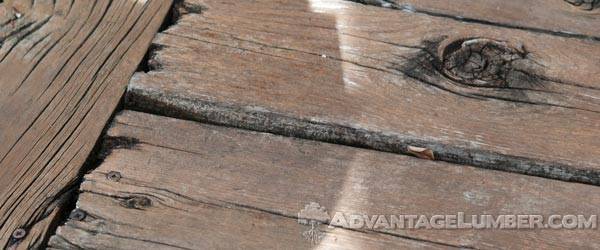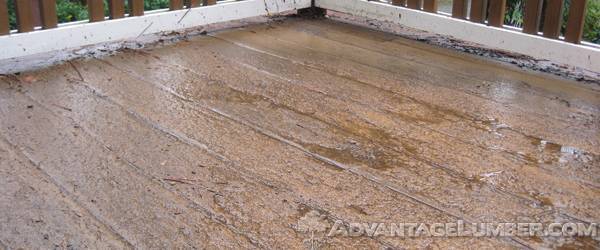
Summer is right around the corner which means your deck will see a lot of action! Before you have your next BBQ, it’s crucial to inspect for potential damage that old man winter may have had on your old deck.
With winter comes snow, rain, and more than likely, ice. When all that moisture sits on old plastic or wood decking, it will soak in, and in return, cause splitting or decaying boards.

When you or a contractor inspect the decking it’s important to check all areas. This includes: ledger board, support posts, joists, deck boards, railings, and even stairs. The ledger board is a common reason why decks fail, so it’s extremely vital to inspect the board thoroughly. The flashing should be in good condition. Check for mold and loose fasteners. If the ledger seems to be in good condition, ensure the fasteners are tightened. Puncturing the wood with a screwdriver, or ice pick, is a good way to see if you are dealing with deck board rot.
Check for posts that are rotting. When posts rot, they can’t support as much weight. If there are any signs of rot or mold, replace the post immediately. Ensure all the post connections to the foundation are secure and no soft wood is present.
Checking underneath your decking is extremely important. It’s easy to overlook, and may be a bit tricky, but with a few extra steps you can feel assured you inspected every piece of your deck. If your decking is on the ground, remove a few boards so you can see underneath. Take a screwdriver and poke the joists and the underside of the deck boards. If the screwdriver penetrates the wood easily, replace the boards. If the joist needs to be replaced, now would be a great time to think about waterproofing the joist system.
Walk around your deck and inspect each and every deck board, including the stairs. Do the same thing you did to the joists, penetrate the decking with a screwdriver. If the screwdriver goes through, replace those boards. If any fasteners are loose, tighten those up. Loose fasteners give moisture the opportunity to enter the deck board and cause rot.
Inspect all railings for water damage. If any rot or decay is present, replace the damaged balusters.
If you happen to see any split decking, replace those boards. Small cracks can be sanded down and resealed, but if there happens to be a large split on a deck board, be safe, replace the board.
In just a short time, you’ll know if any repairs are necessary. When you think about how an accident could happen if you neglect your deck, taking a couple of hours to ensure your deck is a safe is well worth your time. Don’t rush through the process, and contact a local licensed contractor if you are unsure of what you are doing, the safety of your family and friends are of the utmost importance.
We are needing to replace most of our deck this winter. There are a lot of split boards and some don’t look safe. Anyways, I’ll see about hiring a contractor to come and take a better look at it and then make the proper repairs or replacements.
Thank you so much for your advice to inspect your deck in the spring because the deck can split and boards might need to be replaced. About a week ago, I was talking to my sister, and she mentioned that she wants to upgrade her backyard and get a nice deck. I will have to tell her your tips about maintenance or help her look into more resilient materials for the railing and deck such as metal to get a great custom design that will last well!